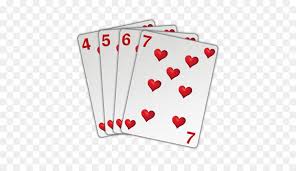Rummy Definition is a group of matching-card games that share the same core objective: to form sets or runs of cards. The primary aim is to improve the hand you initially receive by drawing and discarding cards, creating sequences (runs) and sets (groups) of cards of the same rank. The game can be played with two or more players and typically uses one or two standard decks of cards.
Key Elements of Rummy
1. Sets and Runs
- Sets: A set is a group of three or four cards of the same rank but different suits. For example, a set could consist of the 5 of Hearts, 5 of Diamonds, and 5 of Clubs.
- Runs: A run is a sequence of three or more consecutive cards of the same suit. For example, a run could be the 3, 4, 5, and 6 of Spades.
2. Drawing and Discarding
Rummy involves drawing cards from a stockpile or discard pile and discarding unwanted cards to improve your hand. The game continues until a player forms valid sets and runs and “goes out” or until the stockpile is exhausted.
3. Melding, Laying Off, and Discarding
- Melding: Players can lay down valid sets and runs from their hand.
- Laying Off: Players can add cards to existing melds on the table, extending sets and runs.
- Discarding: At the end of their turn, players must discard one card to the discard pile.
Common Variants of Rummy
1. Gin Rummy
Gin Rummy is a popular two-player variant of Rummy. The objective is to score points by forming sets and runs before your opponent. The game ends when one player reaches a predetermined score.
2. Indian Rummy
Indian Rummy is typically played with two decks of cards and two jokers. The objective is to form at least two sequences, one of which must be a pure sequence (without jokers), and other sets and runs.
3. Rummy 500
Rummy 500, also known as 500 Rummy, allows players to draw multiple cards from the discard pile. The game is played until one player reaches 500 points, with points scored for melded cards.
4. Kalooki (Kaluki)
Kalooki is a variant popular in the Caribbean and some European countries. It involves more complex rules and scoring systems, often with multiple decks and jokers.
Strategies for Success in Rummy
1. Form Pure Sequences First
In many Rummy variants, forming a pure sequence (a sequence without jokers) is crucial. Prioritize creating these sequences early in the game to increase your chances of winning.
2. Discard High-Value Cards
High-value cards like face cards and aces can be risky if you don’t use them in melds quickly. Discarding them early can minimize your point loss if your opponent wins the game.
3. Observe Opponents’ Discards
Pay attention to the cards your opponents pick and discard. This can give you clues about their hand and help you make strategic decisions about which cards to keep or discard.
4. Keep Your Options Open
Try to keep your hand flexible by holding onto cards that can be used in multiple ways. This increases your chances of forming sets and runs quickly.
Conclusion
Rummy is a timeless card game that combines skill, strategy, and a bit of luck. Its various forms and easy-to-understand rules make it accessible and enjoyable for players of all skill levels. Whether you are playing a quick game of Gin Rummy with a friend or participating in a competitive Indian Rummy tournament, the excitement and challenge of forming the perfect hand remain at the heart of the game. Understanding the basic principles and strategies of Rummy can enhance your enjoyment and improve your chances of success. So, gather your cards, deal them out, and immerse yourself in the captivating world of Rummy.




